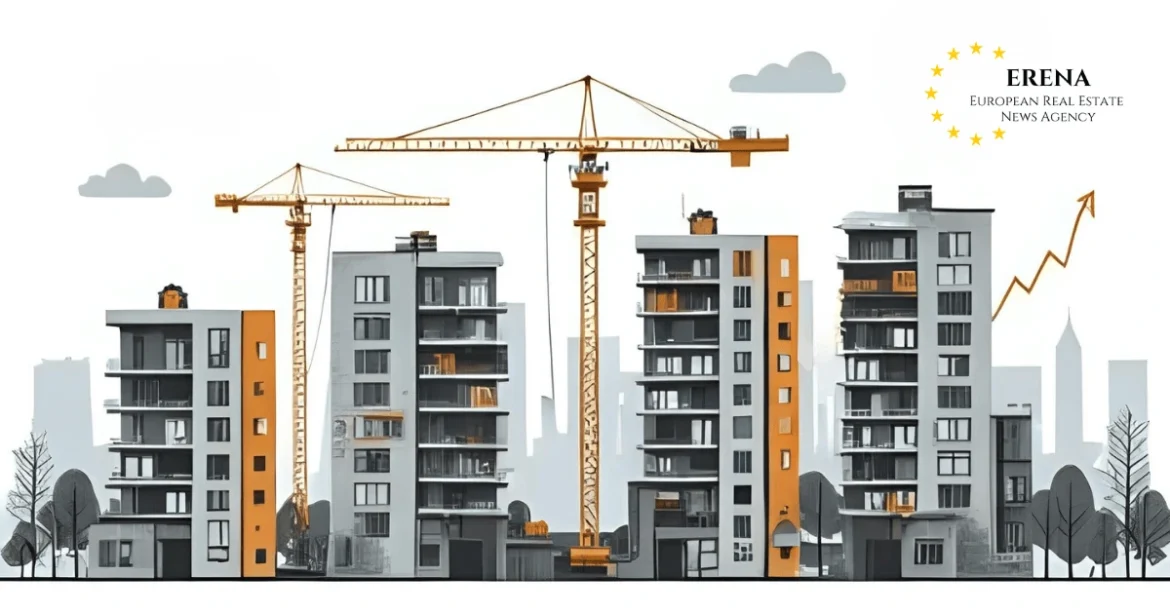Germany is stepping up efforts to restart its struggling residential construction sector by lowering subsidised interest rates on two flagship new-build loan programmes — Klimafreundlicher Neubau (KFN) and Klimafreundlicher Neubau im Niedrigpreissegment (KNN). The updated conditions, effective from 23 September 2025, come alongside broader eligibility changes introduced earlier this month to make more projects qualify for federal support.
Cheaper Loans and Broader Access
Under the revised terms, the state development bank KfW has significantly improved financing conditions for climate-friendly construction. According to the housing ministry and industry reports, interest rates under the KFN (programmes 297/298 for residential and 299 for non-residential buildings) scheme have been cut by 0.6 percentage points to around 2.3 %, while KNN (programme 296 for residential and 596 for non-residential) loans now start from as little as 0.8 %, down from roughly 2.2 % before. These rates are well below current commercial mortgage levels, offering a substantial boost to both buyers and developers.
The government has also widened access to the KNN scheme. Since 1 September 2025, kitchens and open-plan kitchen areas are now counted as habitable space under eligibility rules, and the benchmark construction cost cap has been raised by 18 %. This means more projects — especially those targeting lower-cost housing — can now qualify for support. The changes also apply retroactively to approved projects that have not yet finalised their documentation.
Loan Conditions and Financial Impact
Both programmes are designed to support sustainable and energy-efficient housing projects. Under KNN (programme 296), borrowers can access loans of up to €100,000 per dwelling with repayment terms of up to 35 years and fixed-rate periods of 10 years. The KFN scheme continues to fund residential and non-residential new builds as well as first acquisitions that meet Germany’s strict energy-performance standards.
For developers, the new rates can make a decisive difference to project feasibility. For example, a €250,000 loan at 2.3 % rather than 3.5 % reduces annual interest costs by around €3,000, improving internal rates of return and increasing the likelihood that delayed projects can proceed.
Government Strategy and Industry Response
Housing Minister Verena Hubertz (SPD) said the new conditions are part of a wider strategy to restart construction activity and close Germany’s housing supply gap.
“We are turning the key lever of interest subsidies up another notch,” — Verena Hubertz, Federal Housing Minister
Industry associations welcomed the move but called for more predictable, long-term measures to support developers and investors.
“Every growth initiative is a step in the right direction — but the reductions must be secured on a lasting basis,” — Felix Pakleppa, CEO, Central Association of the German Construction Industry (ZDB)
Analysts believe the combination of cheaper loans and expanded eligibility criteria will unlock many stalled housing projects, particularly in the entry-level and affordable segments. They also point out that counting kitchens as living space and raising cost caps reflects the realities of modern housing design and construction costs.
Market Outlook
Germany’s residential construction sector has faced significant headwinds from rising interest rates, higher material costs, and economic uncertainty. The improved KfW loan conditions could help reverse that trend by reducing financing costs, encouraging new starts, and making energy-efficient homes more accessible.
Developers are expected to respond quickly, with many projects previously deemed unprofitable now becoming viable. However, experts warn that sustained support will be needed to deliver the government’s target of 400,000 new homes per year, a goal that remains far out of reach.
For now, the combination of lower interest rates, broader eligibility, and increased cost flexibility offers one of the strongest policy tailwinds for Germany’s new-build housing market as it enters the final quarter of 2025.

